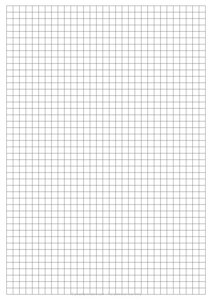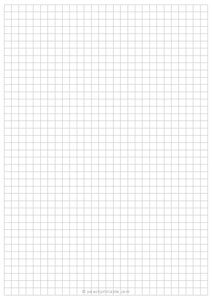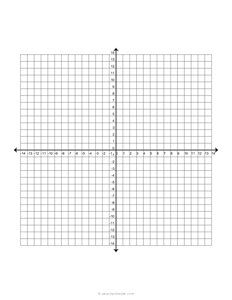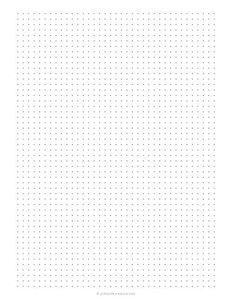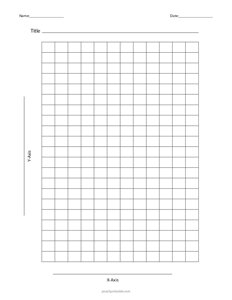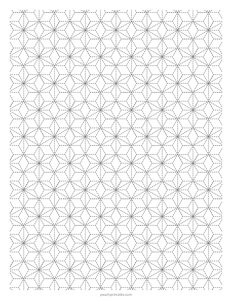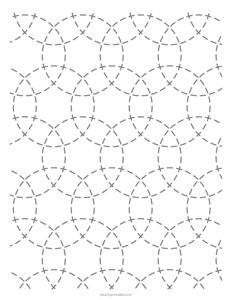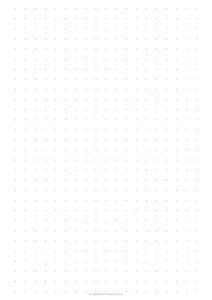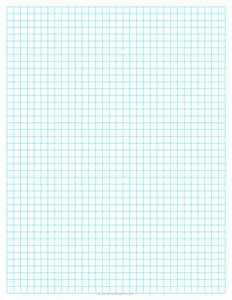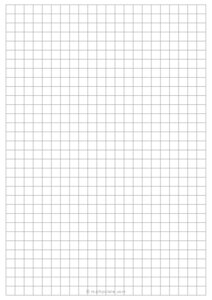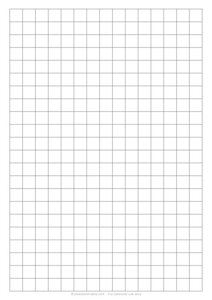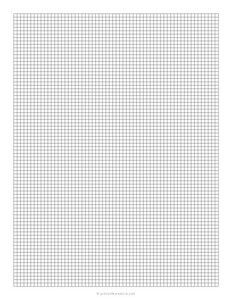Printable Graph Paper
Download free printable graph or grid paper with different line heights, heavier grid lines, color, line spacing for mathematical, engineering and scientific purposes.
Recommended: Check out this Graph Paper Maker to create custom style printable graph papers.
Showing 1-15 of 237 records
1/4" Plain Graph Paper (A4)
1/5" Graph Paper (A5)
5 mm Dot Grid Paper (A4)
Cartesian Grid Paper - Four Quadrant
1/5" Dot Grid Paper
1/8" Plain Graph Paper (A4)
Bar Graph Template - 2
1/4" Dot Grid Paper
Sashiko Hemp Leaf Pattern
Sashiko Circle Pattern
10mm Dot Grid Paper (A4)
1/4" Graph Paper - Blue
1/4" Graph Paper (A5)
1/2" Graph Paper - (A4)
1/8" Plain Graph Paper
Printable graph paper usually contains a grid of evenly spaced horizontal and vertical lines, forming a series of squares or rectangles. Each square represents a specific unit of measurement, such as inches or centimeters, and is typically used for various types of graphing, drawing, plotting, and mathematical purposes.
Here are some types of graph paper:
- Square grid paper: This type of graph paper consists of a grid of uniformly sized squares, with horizontal and vertical lines intersecting at regular intervals. Each square represents a specific unit of measurement, allowing for precise drawing, plotting, or graphing.
- Rectangular grid paper: Similar to square grid paper, but with rectangles instead of squares. This variation may have different proportions, such as a 2:1 ratio for engineering graph paper, where each rectangle is twice as tall as it is wide.
- Coordinate grid paper: This type includes labeled horizontal and vertical axes, often with numerical or alphabetical labels. It's commonly used for plotting coordinates, graphing functions, or conducting mathematical analysis.
- Polar graph paper: Instead of a rectangular grid, polar graph paper features concentric circles and radial lines, typically used for plotting polar coordinates or graphing polar functions.
- Specialty graph paper: Some printable graph papers may include additional features, such as logarithmic scales, isometric grids, or specialized layouts tailored to specific disciplines or tasks.
- Mathematics: Students and professionals use graph paper for plotting equations, graphing functions, visualizing data, solving geometric problems, and conducting mathematical analysis.
- Engineering: Engineers and designers use graph paper for sketching diagrams, drafting plans, creating technical drawings, and plotting scaled measurements.
- Science: Scientists use graph paper for recording experimental data, drawing graphs, analyzing trends, and illustrating scientific concepts.
- Architecture: Architects and drafters use graph paper for designing floor plans, sketching building layouts, plotting site measurements, and creating scaled drawings.
- Art: Artists and designers use graph paper for sketching, drawing, planning compositions, creating pixel art, and exploring geometric patterns.
- Education: Teachers use graph paper as instructional aids for teaching geometry, algebra, trigonometry, and other mathematical concepts. Students use it for completing assignments, practicing skills, and visualizing mathematical relationships.
- Crafts and hobbies: Hobbyists and DIY enthusiasts use graph paper for various crafts, such as cross-stitching, quilting, knitting, beadwork, and creating patterns or templates.
Some of the common uses of printable graph paper:
Printable graph paper provides a versatile and convenient tool for visualizing, planning, and creating across a wide range of disciplines and activities. Its grid structure offers precision and accuracy, making it indispensable for tasks that require careful measurement, alignment, or graphical representation.

